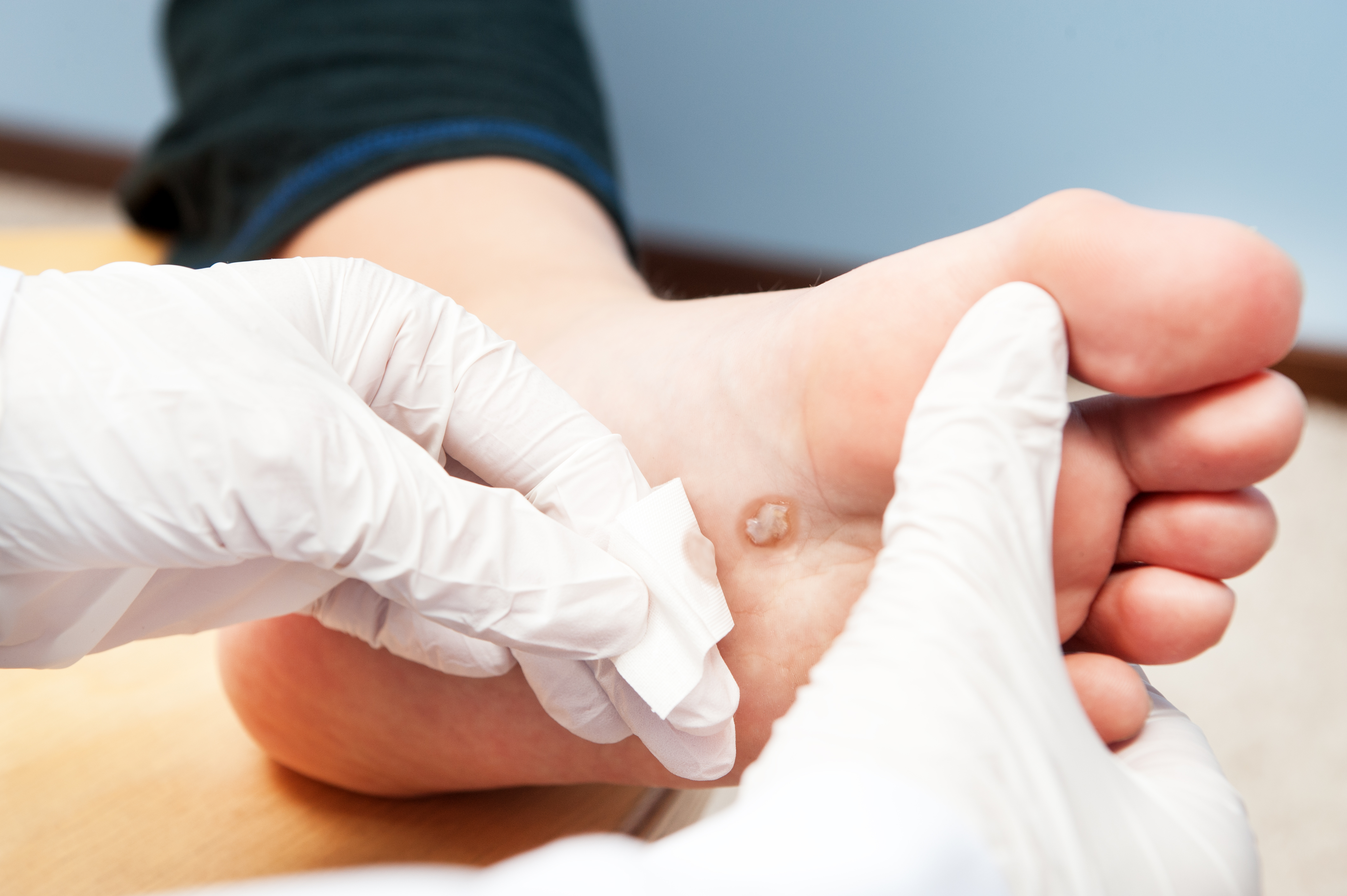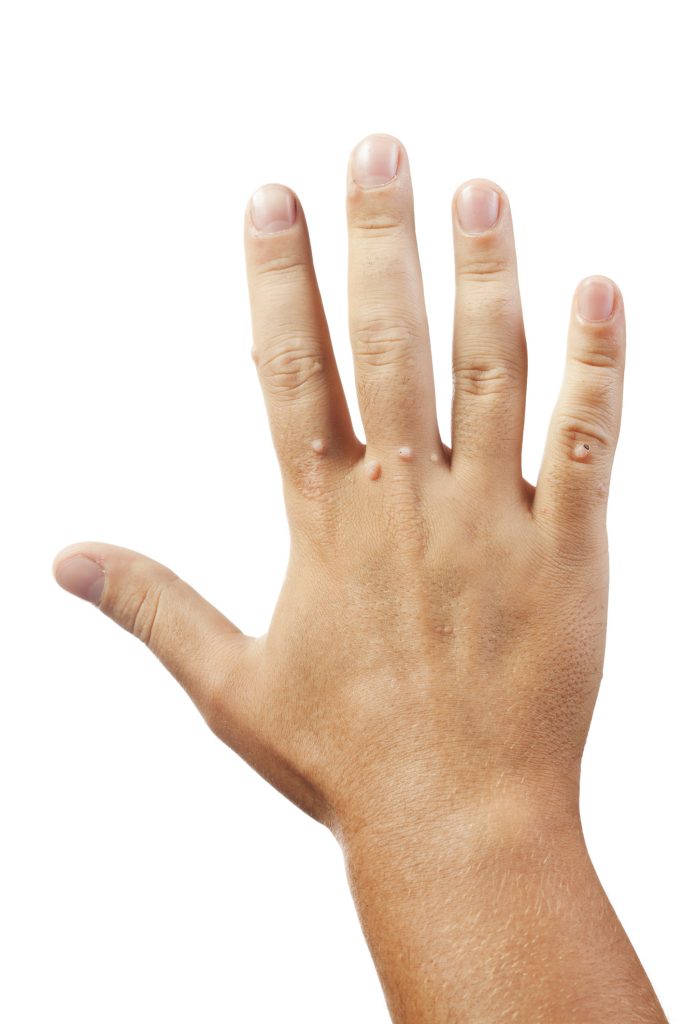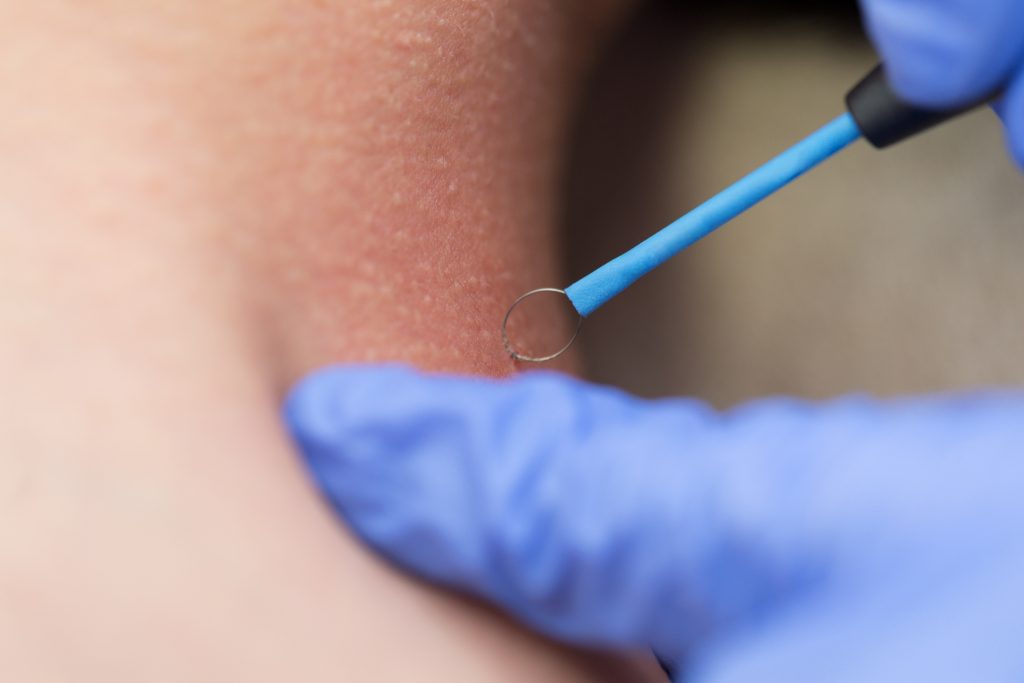Wart Removal and Treatments from U.S. Dermatology Partners
What Are Warts?
Warts are benign, non-cancerous growths that appear on the skin as the result of a virus called human papillomavirus, or HPV. They are contagious and are spread by contact – either with the wart or something that touched the wart. Cut or damaged skin is more vulnerable to warts.
Related: How to Identify a Wart

Warts are benign, non-cancerous growths that appear on the skin as the result of the human papillomavirus.
Find This Service Near You
Who Is at Risk for Warts?
Anyone can get warts, although children, teens and people who bite their nails are at greater risk. People with a weakened immune system are also more likely to get warts.
Warts Symptoms

Warts can appear anywhere on the body.
There are different kinds of warts; common warts most often grow on the fingers, around the nails or on the back of hands. They are often skin-colored and feel rough, but can also be dark, flat and smooth.
Other types of warts are:
- Plantar warts, which often grow in clusters on the soles of the feet
- Flat warts, which are smaller and smoother than other warts but often grow in large groups, with as many as 100 warts appearing at a time
- Filiform warts, which look like long threads and often grow around the mouth, nose and eyes
Wart Removal Treatment

Warts can be removed from skin with electrosurgery.
In many cases, warts will go away on their own, but if they do not, or if you have numerous warts and/or they hurt, you should seek treatment. This can include such procedures as cryotherapy, which involves freezing off the wart; cantharidin, which is a chemical compound that removes the wart in as little as 24 hours; electrosurgery, in which the wart is burned off; cutterage, which scrapes the wart from the skin and often is used in conjunction with electrosurgery; and excision, in which the wart is cut out from the skin.
In more difficult cases, your doctor may use laser treatment or chemical peels to remove the wart. The doctors at U.S. Dermatology Partners can help you determine which method of treatment works best for your situation.
Warts Prevention
The best way to prevent warts is to avoid touching warts on yourself or others. Don’t share razors, towels or socks with others, as warts are contagious and, if the other individual has warts, they can be passed on to you.
To avoid plantar warts, keep your feet dry and avoid walking barefoot on warm, moist surfaces.
*Results may vary by individual
